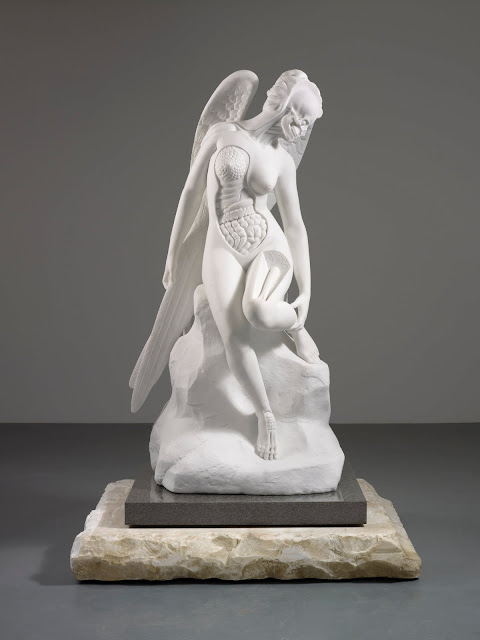Alan Stones lithograph prints are interesting due to their careful composition. The well thought out positioning and scale of his subjects on the page are striking, especially due to their bold black and white contrast. The subject themselves are a commonly explored area, but I feel that this time they have been done in an exciting way. The simplicity of the peices really helps their appeal.
Joseph Rankin
Bird 3, oil on paper Cow 2, oil on paper
Of all the work I saw at The Biscuit Factory, Joseph Rankin's was the most exciting to me. The twisted figures and anthropomorphic content really stuck in my mind. His loose drawing and painting style, delicate use of colour with splashes of harsher tones work in perfect harmony with the subject. This work has inspired me to use a looser brush approach within my own work.
Sarah Morpeth
Box Book, ink, acrylic and wire Torquils Book, ink, acrylic and wire
After battling numerous times with cutwork, I really appreciate it as an art form. Obviously, this technique can be made a lot easier with the use of a laser cutter, but nonetheless the results are always impressive. These cut books by Sarah Morpeth are impressionable due to their intricate detail, and subtle addition of colour.
Anthony Stern
Helix Chandelier, hand blown glass
Various, hand blown glass
After spending half a year trying to blow a successful piece of glassware, I have great admiration for anyone who can use glass. Anthony Stern is no exception. The perfect forms and expressive use of colour and line within the forms is stunning. The use of light within the work really shows the glass' full splendour.
Sophie Layton
Beyond the veil, 2010, ink on paper
Although Sophie Layton's work may not be the most extroverted of the exhibition, I find it has a subtle elegance that really spoke out. The simple wash backgrounds and the pale prints of fabric are delicate and easy on the eye.
































